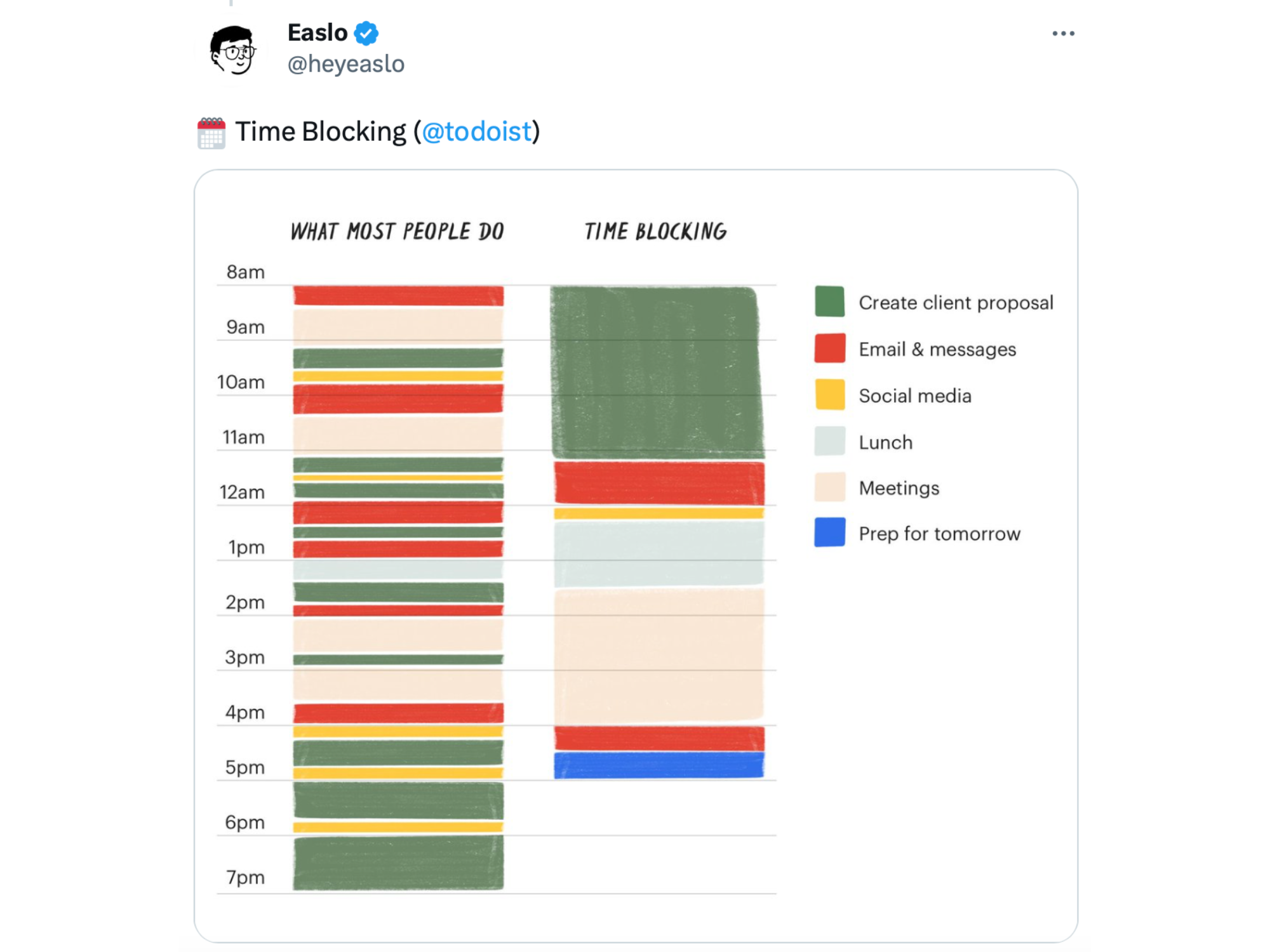How I Manage Multiple Goals At Once (my ‘FOSE’ method)
I alway have multiple goals going on at the same time. This’ll probably never change. But for me, multiple doesn’t mean too many.
Focus is a talent, for sure, but learning how to stretch that attention is a cool skill too.
So this post shares how I successfully manage (and crush) my many ambitions.
Let’s get to it.
Table of Contents Show
Hey there, just a heads up that some of the links in this post may be affiliate links. That means I earn a small commission. This is at no extra cost to you, but helps me keep the lights on. Thank you for your support!
One Goal vs. Multiple Goals (pros + cons)
Is having too many goals at the same time an issue? Are there any benefits?
Let’s start by unpacking these questions.
Here are some pros and cons to managing multiple goals at once.
Some Upsides of Having More Than One Goal
A rotating focus reduces monotony and keeps things interesting
More diverse skill development
More balance in your pursuits
More “lines in the water” (= more chances of success)
Some Downsides of Having More Than One Goal…
Time and energy constraints
Focus and prioritization issues
Slower (or smaller) skill development and knowledge in particular areas
More pressure (to succeed in more than just one area)
How to Manage Multiple Goals (my ‘FOSE’ method)
If you’re like me — and set on juggling more than one ambition — then my system will help.
I’m calling it the FOSE method, which is an acronym for:
Focus
Organize
Systematize
Expand
It’s how I organize multiple goals (and make sure nothing (too important) gets pushed aside or left behind).
Here’s what I do.
1. Focus
Remember, multiple (goals) doesn’t mean too many (goals) – we still need some focus.
So I like to start things off by creating a shortlist of my top goals (that is, dial in on what’s actually most important to me).
This gives me some important initial clarity and direction.
Here’s what I do:
Create a big list of everything I want
Self reflect and spend time considering which are actually most important to me (and why)
Make this list smaller and smaller until I can’t narrow it down any further (i.e., create a shortlist)
This is relatively straightforward, but if you’re struggling to narrow things down, try considering your values, passions and sense of purpose.
Because if a goal isn’t vibing with these things, then maybe you should scrap it.
But how many goals should you end up with?
Like, what’s the limit here?
This is ultimately up to you and totally depends on your time availability and preferences.
But for me, I try not to focus on more than two or three main goals at a time.
I’ve found this to be my own sweet spot. But play around to find what works for you.
So now that we know what we want, it’s time to organize our goals.
2. Organize
This next step will organize your goals into a framework.
This will be like a daily template or schedule that you can easily follow.
The framework I’m currently using turns one day into three mini days, like this:
Morning (day 1)
Afternoon (day 2)
Evening (day 3)
This helps me reframe my time and scheduling.
I can organize my goals into specific time buckets (day 1, 2 or 3) based on mood and work preferences for that particular time of day.
For example, I always feel fresh and inspired in the mornings.
So I like to spend this time chipping away at creative stuff – usually my blogging, website growth and writing goals.
My afternoons are less crafty. So I spend time on more business-oriented, client type of work.
And my evenings are back to creativity. I’m usually neck deep in music or other artistic pursuits (like editing footage for a film project).
This system is essentially time blocking my tasks into three main parts of the day.
How you group your goals and tasks will of course depend on your own preferences and situation.
For example, you may prefer to use a framework that groups things based on urgency or level of importance.
But whatever method you choose, organizing goals into a structure that makes the most sense for you is incredibly helpful.
This way, we can better systematize things.
3. Systematize
Systems work wonders – especially when we’re trying to manage multiple pursuits.
So this is where I like to turn my many goals into individual systems.
Creating a goal system is like creating a custom game plan with clear instructions for which tasks to work on (and in what order).
I systematize my goals by first breaking them down into their core components.
These components become my daily and weekly tasks. These tasks (coupled with my organizational framework) become my workflow.
It looks something like this:
Write down your main macro goal
Write down the micro goals required for meeting that macro goal
Write down the nano goals/tasks required for meeting each micro goal
I also like to have a way to monitor my goals and their individual progress.
So I create a central goal hub for tracking everything. My go-to tools for this job are:
4. Expand
Eventually, if you show up everyday, your systems will become more automatic and you'll start reaching some important checkpoints.
Things will become easier and you’ll find yourself with more time (or at least, better time management).
This is where I start to expand.
I do this by adding and stacking on more goals.
You may circle back to your initial list (from step 1) to choose your next objective.
Or you may have come up with some newer or fine-tuned goals to work on (inspired from your first round of goals).
Either way, whenever you find yourself with more time and ready to stack on more stuff, look for goals that are somehow related to what you’re already working on.
This can compound things even further and have a cumulative effect.
For example, once I reach my goal of 10,000 monthly readers (almost there now!), I could simply move that goal post to 25,000 readers.
Or I could shift focus to a different, but related, goal like building an email list.
Both of these things are complimentary to the first goal (of growing to 10,000 readers).
Similar to how you start with a single seed, roots eventually form and lead to a tree with multiple branches and many leaves growing in separate corners.
Everything is connected, but things also stand out in their own way.
Want More? Check Out These Sweet Reads!









